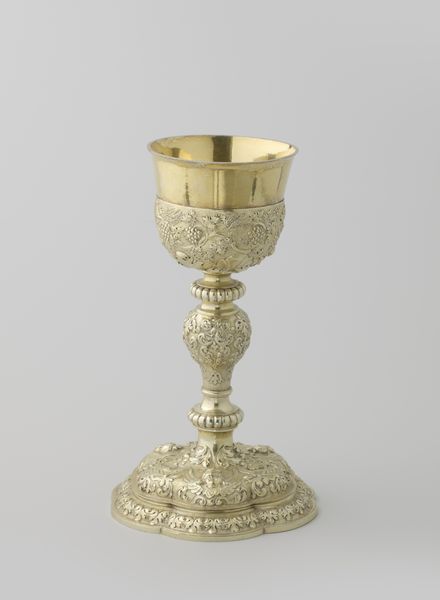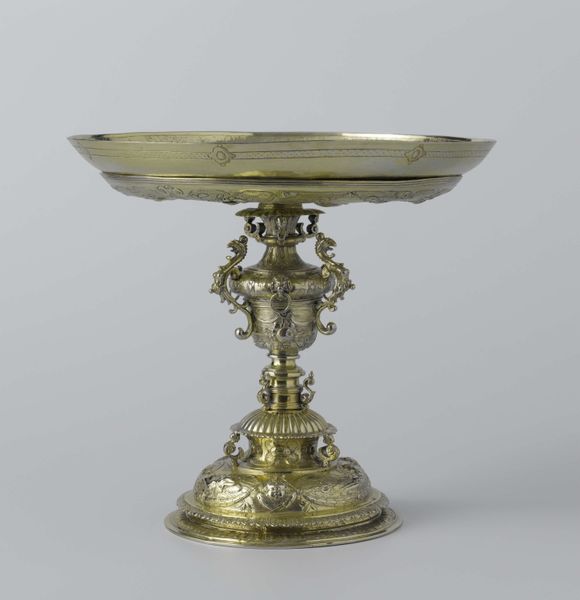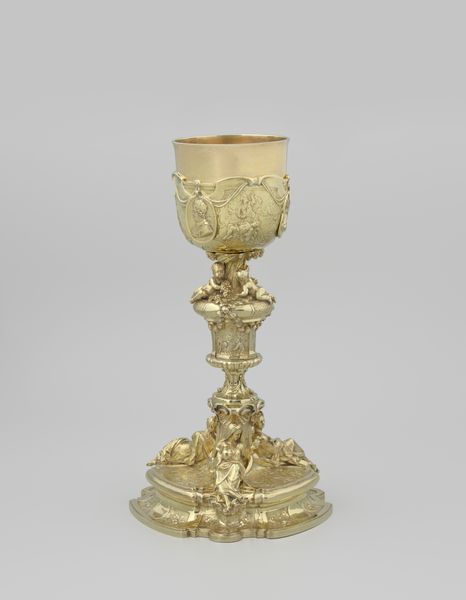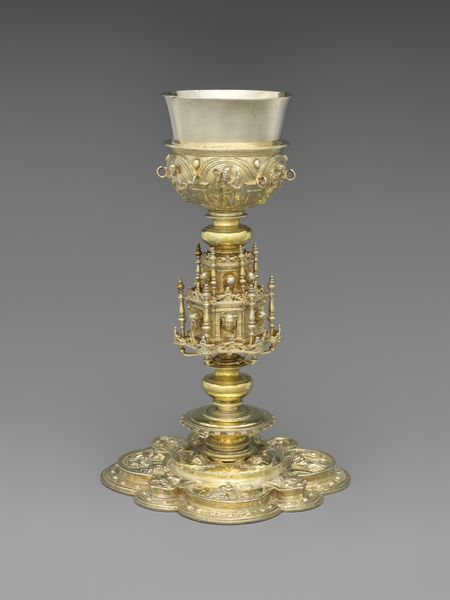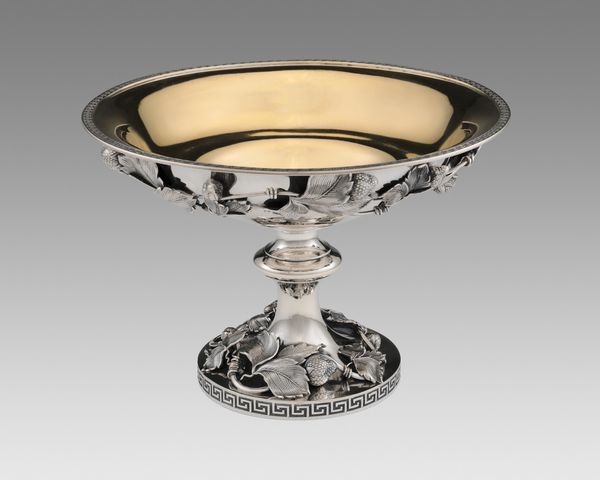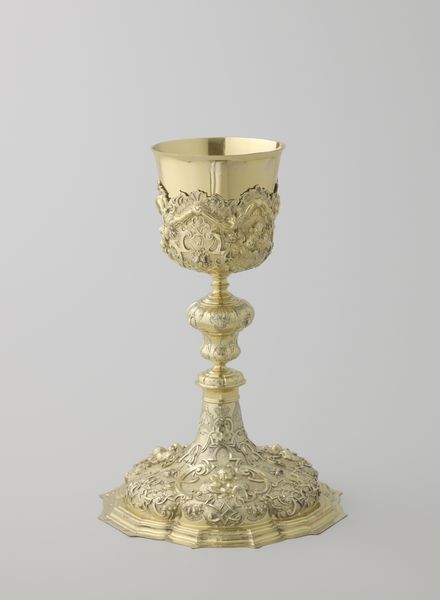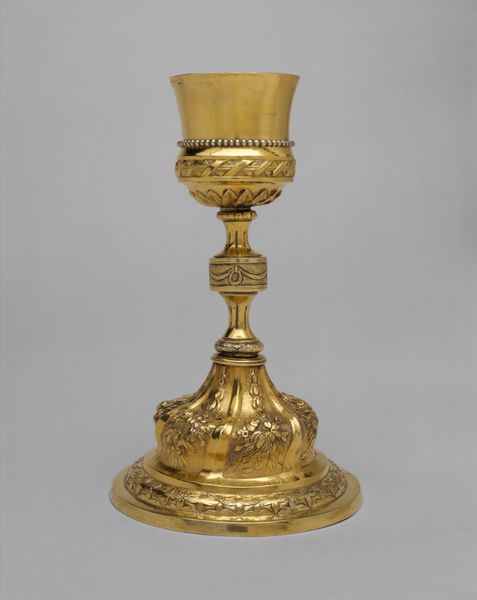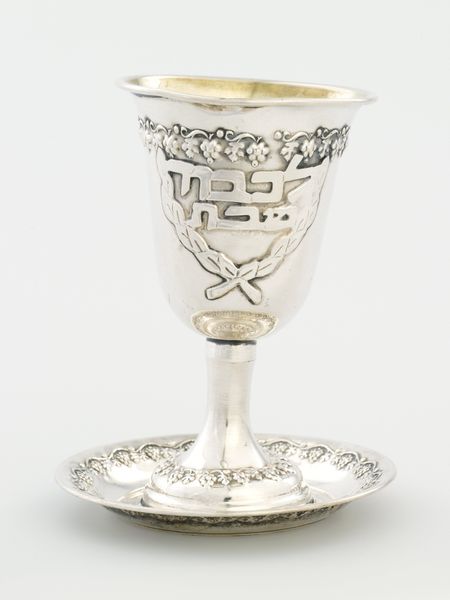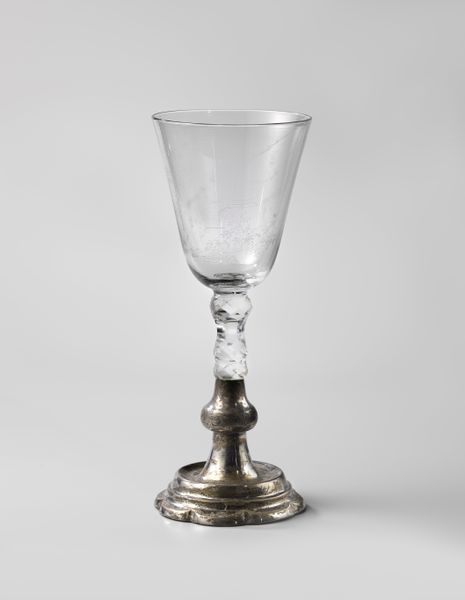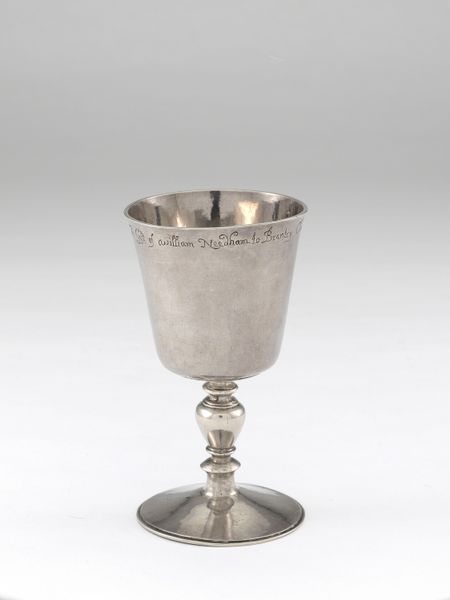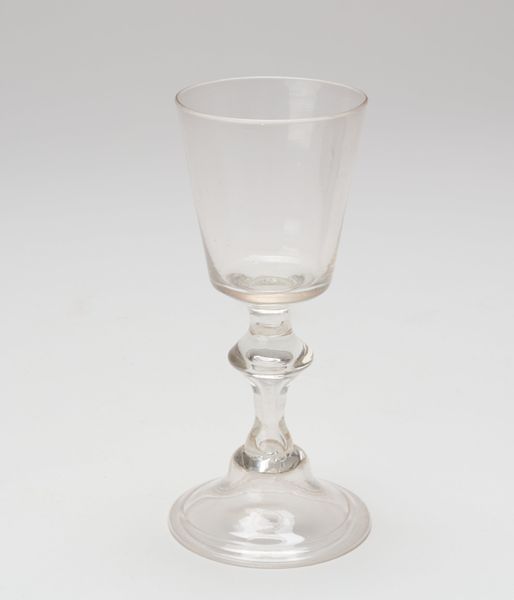
metal, gold, sculpture
#
medieval
#
metal
#
gold
#
sculpture
Dimensions: height 20.5 cm, diameter 16.5 cm
Copyright: Rijks Museum: Open Domain
Curator: Let’s take a moment to examine this stunning chalice created in 1519 by Léonard de Bommershoven. Editor: My initial impression is one of intricate detail, the play of light on metal giving it a sacred aura, while a sense of cool solemnity settles on the heart. Curator: The choice of materials—primarily gold—certainly amplifies that aura, doesn't it? Given its likely purpose in religious ceremonies, the precious metal elevates its significance. Gold in that era was less an ostentatious statement and more an essential representation of celestial glory, reflecting both divine authority and worldly power. Editor: Indeed, beyond pure materialism, the selection of gold is imbued with cultural and religious meaning, connoting holiness, transcendence and the divine light. The careful construction is replete with symbolism – what can you tell us about the images here? Curator: Look closer, and you’ll observe that even at its base is adorned with floral designs along with cruciform figures—a popular medieval form, subtly weaving symbolic religious meaning into this piece. You have here multiple depictions of faith intertwined with luxury, all underpinned by the authority and wealth of the Church. Editor: Those fleur-de-lis motifs echo through the ages too. Beyond the specific symbols themselves, observe how our responses to images remain, culturally persistent and archetypal. And from that cross motif on the base to the bowl itself, that receptable – everything conveys meaning about sacrifice, spiritual communion and divine blessing. Curator: It would have been perceived and used very differently according to whoever was officiating—perhaps the priest would handle the vessel in a manner conveying the sacred transformation about to occur, almost like a stage for enacting deeply rooted beliefs. The very act of consumption from this chalice reinforced societal hierarchy and power. Editor: That brings forward something compelling to consider – just how deeply images resonate across the centuries to touch, unite and bind communities. The Chalice serves, in some ways, like the material equivalent of collective memory, holding powerful symbols from one age into another. Curator: Thank you. Thinking through its placement, use, and cultural interpretation, this chalice emerges not merely as an artistic accomplishment of a Renaissance metalworker, but a microcosm for medieval Europe. Editor: Absolutely. Pondering this beautiful artifact brings me back to that awareness of how we still, subconsciously, are moved and shaped by the symbolism within.
Comments
rijksmuseum about 2 years ago
⋮
The inscription on the underside of this chalice suggests that this object was commissioned in 1519 by Tilman van Herckenrode. He was a high priest at the church of Saint John the Evangelist in Liège and at the abbey of Ciney in the Ardennes.
Join the conversation
Join millions of artists and users on Artera today and experience the ultimate creative platform.
